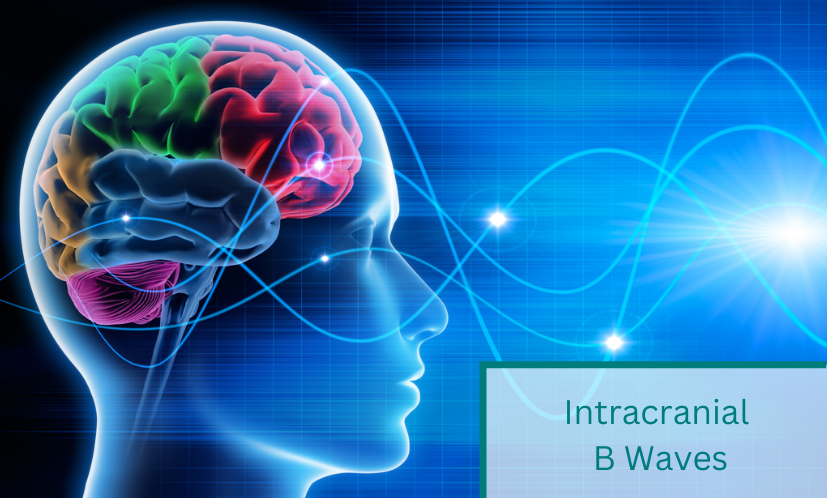
18 Feb. 2025 Intracranial B Waves
TCD in use with Intracranial B Waves
Intracranial B waves are slow, rhythmic oscillations of cerebral blood flow (CBF) and intracranial pressure (ICP), traditionally observed in head injury patients and during sleep. Recent studies suggest that these waves may play a crucial role in cerebrospinal fluid (CSF) circulation and glymphatic clearance. In a study from 2022, transcranial Doppler sonography (TCD) was used to analyze the characteristics of B waves and compare them with previously published MRI-based measurements of slow CBF and CSF oscillations.
Study Design and Methods
The fronierts study „Physiological Mechanisms and Significance of Intracranial B Waves“ analyzed digital recordings from 29 patients with traumatic brain injuries, focusing on middle cerebral artery flow velocity (MCA-FV), ICP, arterial blood pressure (ABP), and end-tidal CO₂ (EtCO₂). Researchers applied spectral analysis to evaluate wave frequency, waveform characteristics, and cross-correlations between MCA-FV and ICP fluctuations. The findings were then compared to previously published MRI data on spontaneous CBF and CSF oscillations.
Key Findings using TCD for B waves detection and analysis
- Frequency Range and Amplitude: B waves in MCA-FV showed a peak amplitude at 0.0245 Hz, with a time derivative peak at 0.035 Hz. The overall frequency ranged between 0.011 and 0.038 Hz (0.6–2.3 cycles per minute), aligning closely with MRI-measured slow CBF oscillations in healthy individuals.
- Wave Morphology and Asymmetry: Both MCA-FV and ICP waveforms displayed significant asymmetry, characterized by a steeper descent compared to ascent. This pattern was consistent with MRI-measured CBF fluctuations.
- Cross-Correlation with ICP: The study found a close temporal relationship between MCA-FV and ICP fluctuations, mirroring the relationship observed between CBF and CSF movements in MRI studies.
- Physiological Relevance: B waves occurred predominantly during states of reduced consciousness, such as sleep or sedation. These findings suggest that B waves contribute to CSF movement and may facilitate glymphatic clearance, which plays a role in removing metabolic waste from the brain.
Conclusion
This study highlights the effectiveness of TCD in detecting intracranial B waves and provides strong evidence of a shared physiological mechanism between B waves and MRI-measured slow oscillations of CBF and CSF. The oscillations observed in TCD appear to be part of a coordinated system that regulates intracranial dynamics and supports glymphatic circulation. These findings could have significant implications for understanding brain clearance mechanisms, particularly in conditions such as traumatic brain injury, stroke, and neurodegenerative diseases.
Newell DW, Nedergaard M, Aaslid R. Physiological Mechanisms and Significance of Intracranial B Waves. Front Neurol. 2022;13:872701. doi:10.3389/fneur.2022.872701.
